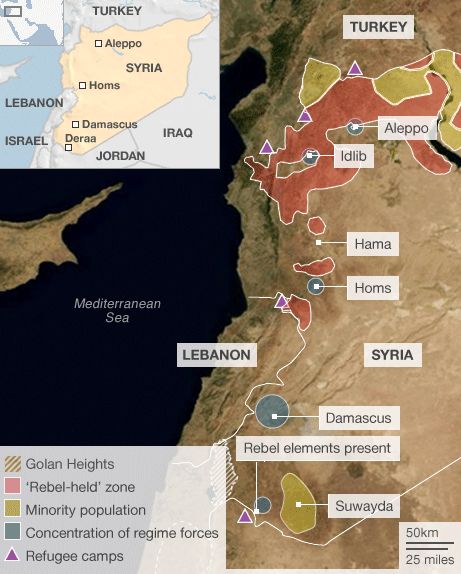Two years into Syria's civil war, and the tables have turned, the Syrian
government is collapsing, and President Bashar al Assad has been reduced to a
warlord. The rebels continue to make substantial gains, but they are having a
hard time unifying. And even though al Assad's forces
still control a sizable portion of the country, they probably will not retake
the country entirely. More likely, Syria will face a similar fate as Lebanon,
where various factions struggle to govern the country, after an eventual rebel
victory. The problematic news that becomes evident is that even if the al Assad
regime is removed and replaced, additional unrest and insurgency is to be expected.

The Jihadist Card
At the beginning of the uprising in Syria, the opposition's fighters
were mostly defected Syrian army soldiers and Syrian citizens. But as the rebel
movement grew in size and intensity, reports emerged
of fighters from Libya, Tunisia and other North African states joining the
fight against the regime of President Bashar al Assad. Despite the influx of
North African fighters, however, the opposition remained poorly armed and
displayed no clear and organized command structure.
By the end of 2011, it became evident that Syrian citizens, army
defectors and North African fighters were not alone in battling the regime. Jabhat
al-Nusra, a jihadist faction, claimed a Dec. 23 double vehicle-borne
improvised explosive device attack on Syria's Office of the Security
Directorate in Damascus -- the opposition's first major blow against hardened
security infrastructure. Since that time, Islamist and Salafist
jihadists have been trickling into Syria from Yemen, Saudi Arabia, Iraq and
Jordan. Even with the removal of the al Assad regime, elements of the growing
and increasingly diverse rebel movement, especially the jihadists, can be
expected to sustain an insurgency that will have spillover effects in the
region.
In this context the USA made it clear that Jabhat al-Nusra is
designated a foreign terrorist organization, whereby the question is what capabilities
Washington has to distinguish the group from other rebel factions. Plus since the United States is not presently providing
support to the group, the addition of the group to the U.S. blacklist does not
have any direct ramifications for Jabhat al Nusra's operations at the moment.
By some considered “a
third force” the following
entry lists a number of articles and theories describing where and how the
Jabhat al Nusra came from.
However, it is evident is that Jabhat al-Nusra has grown considerably
since its inception, with some estimates of its current membership
between 6,000 and 10,000 fighters.
This growth occurred in part because the group has demonstrated that it
has the organization, funding and expertise to execute large attacks on the
Syrian regime. These qualities allowed the group to quickly supplement its
forces with members from other rebel units.
However, not all rebel factions agree with Jabhat al-Nusra's tactics.
The group has shown indifference to collateral damage so long as security
forces are killed. In addition, some rebels are religiously and ideologically
opposed to the group, which wants to establish a government based on Sharia law
once President Bashar al Assad is removed. Nonetheless, the group has
unmistakably emerged as one of the major players on the Syrian battlefield.
And this highlights the looming reality that when al Assad is no longer
in power, even if some of the rebels are brought in to negotiate a transition,
an insurgency by Islamist extremist groups such as Jabhat al-Nusra will
continue, since their overarching objective is to set
up an Islamic state in Syria. Even if an Islamist government comes to power,
there is a significant difference between Islamist representation in parliament
and an Islamic state. Any Islamist presence in government would likely come
from Muslim Brotherhood-style Islamists, who are at odds with strict jihadist
doctrine. Therefore, even if the al Assad regime is removed and replaced,
additional unrest and insurgency can be expected.

For updates click homepage
here